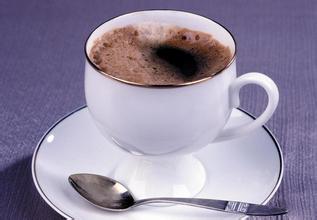Lindong, Sumatra, the origin of Indonesia's Mantenin Coffee.
Mantenin is a kind of distinctive feature produced by the special and complex treatment of the fresh Mantenin in that year and after more than 5 years of special preservation. Like Gold Manning, its annual output is limited, and the yield of aged beans is smaller because of the difficulty and complexity of processing and preservation.
This Chen Man has the cool feeling of mint, a hint of vanilla, the sweetness of herbal tea, complex spices and a strong and mellow flavor. Dry aromas have flavours of grain, malt and wood; wet aromas are dark aromas of roasted caramel and pine, with a hint of earth after rain. The palate is intense and exciting on the palate, with lilac, woody aromas and strong and persistent mint.
Like the cool sea breeze sweeping across the lips and teeth from the blue Blue Batak of Lake Toba, north of Sumatra, there are other stories to tell:
Blue Batak is named after the Batak, the aboriginal people of northern Sumatra. The Batak people mainly believe in Christianity. In fact, it is the mother descent of the "Mandenin" clan. It was also mentioned in the Coffee Science that Sumatran coffee is generally known as "Mantenin". In fact, it should be renamed "Batak". However, historical factors have accumulated.
The area is flat, about 1550-1650 meters above sea level, and the soil fertility is moderately rich in organic matter. Most coffee trees are shaded and planted. Traditionally, shade trees can maintain moisture and increase soil fertility. Most coffee women carry out weeding and fertilization with their bare hands, and coffee cherries are harvested and removed artificially when they are ripe. The wet pods are placed in a plastic bag and fermented for 10-12 hours, and then the pectin, floats and shells are removed manually, rarely using a machine. Unlike Central and South America, Indonesian coffee beans are unique semi-aqueous method, which is also the local Bhatta traditional wet peeling method (wet-hulled), which the locals call Giling Basah. (with regard to wet peeling, the hand of Hope will be described in more detail.)

Important Notice :
前街咖啡 FrontStreet Coffee has moved to new addredd:
FrontStreet Coffee Address: 315,Donghua East Road,GuangZhou
Tel:020 38364473
- Prev

Medium light acidity coffee beans Honduran coffee beans
Medium or light acidity, giving a distinct but not intense sensation. Sometimes with a nice floral or fruity aroma (generally different regions, different altitudes of beans have different performance). It is not at all reminiscent of the turmoil in this country. Bitterness and pronounced sweetness. Honduran coffee taste overall balanced, sour and bitter are not so strong, between the two
- Next

Western Coffee Indonesia Bali coffee producing area Quinta Mani
Balinese people are descendants of prehistoric humans who migrated from other Indonesian islands and have retained their own national and ethnic identities and social values best suited to their own survival and development. Bali Bali According to the literature, the first contact with the outside world that changed their lives was with merchant ships and travelers from India. They brought India.
Related
- Does Rose Summer choose Blue, Green or Red? Detailed explanation of Rose Summer Coffee plots and Classification in Panamanian Jade Manor
- What is the difference between the origin, producing area, processing plant, cooperative and manor of coffee beans?
- How fine does the espresso powder fit? how to grind the espresso?
- Sca coffee roasting degree color card coffee roasting degree 8 roasting color values what do you mean?
- The practice of lattes: how to make lattes at home
- Introduction to Indonesian Fine Coffee beans-- Java Coffee producing area of Indonesian Arabica Coffee
- How much will the flavor of light and medium roasted rose summer be expressed? What baking level is rose summer suitable for?
- Introduction to the characteristics of washing, sun-drying or wet-planing coffee commonly used in Mantenin, Indonesia
- Price characteristics of Arabica Coffee Bean Starbucks introduction to Manning Coffee Bean Taste producing area Variety Manor
- What is the authentic Yega flavor? What are the flavor characteristics of the really excellent Yejasuffi coffee beans?

